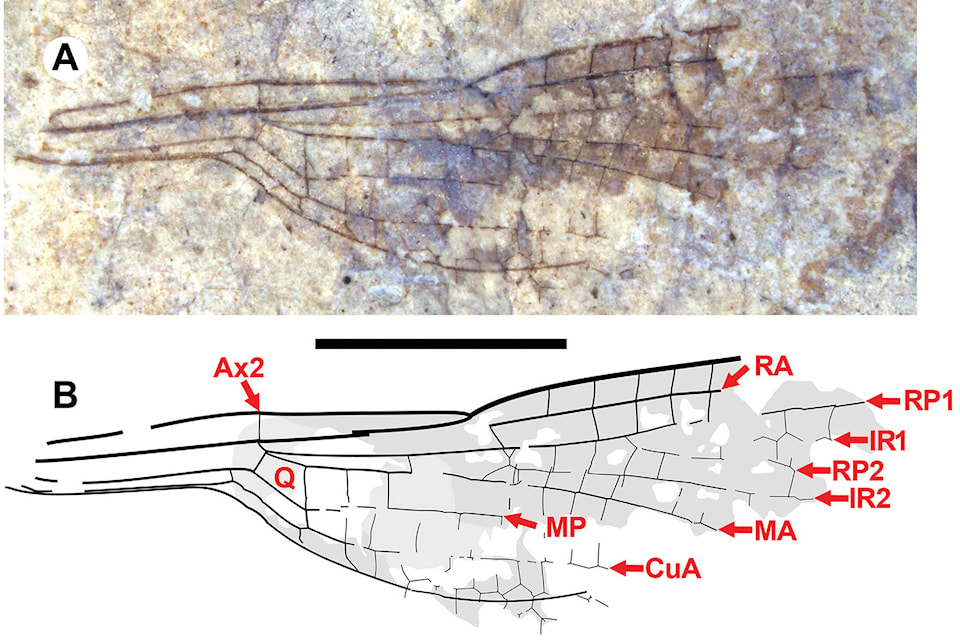Driftwood Canyon fossils are once again contributing to a new understanding of an ancient era.
In a paper published in late February in the journal Zootaxa, a research team led by Simon Fraser University’s Bruce Archibald identified a new extinct group of insects related to dragonflies and damselflies.
When Archibald and others started finding the fossils around British Columbia and Washington state, they initially thought they were damselflies, but the heads weren’t right.
Damselflies have short and wide heads with eyes distinctively protruding far to each side, whereas these had rounded heads and eyes.
READ MORE: 50 million year old bird comes home to roost
The scientists noted they bore a great resemblance to a fossil German paleontologist Hermann Hagen wrote about in 1858.
“Paleontologists since Hagen had written that these were damselflies with distorted heads,” Archibald said. “A few hesitated, but still assigned them to the damselfly suborder.”
After studying 150 years worth of literature the researchers recognized what they were looking at was actually a new suborder, which they named Cephalozygoptera, meaning “head damselfly.”
The paper identifies four new genera and 16 new species of Cephalozygoptera including one Archibald collected in Driftwood canyon named Dysagrionites species B.
“They were important elements in food webs of wetlands in ancient British Columbia and Washington about 50 million years ago, after the extinction of the dinosaurs,” said Archibald. “Why they declined and went extinct remains a mystery.”
The Driftwood fossil resides at the Royal British Columbia Museum.
editor@interior-news.com
Like us on Facebook and follow us on Twitter
Driftwood Canyon and Archibald were also in the news in 2019 when he brought home an ancient bird fossil from Germany where it had resided for nearly 50 years.
